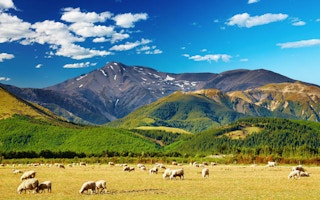The New Zealand government may have participated in major climate fraud through the use of dodgy “hot air” carbon credits issued by the Ukraine and Russia, according to a new report from the Morgan Foundation.
The Emissions Reduction Units from the two countries did not represent true emissions reductions, Morgan Foundation economist Geoff Simmons said.
His report, Climate Cheats, also said that proportional to national emissions, NZ had been the largest purchaser of the credits worldwide through its Emissions Trading Scheme to the tune of $200 million.
Mr Simmons said the government had been allowing unlimited use of these and other foreign credits, and that it now planned to utilise all of them in order to claim it has met international emissions reductions obligations between now and 2020.
However, he said, the nation’s actual emissions are continuing to grow in excess of national targets.
“We have been party to a fraud that has potential to damage our international reputation as a clean, green and corruption-free country.”
There have been a number of other impacts that are already apparent, including the price of carbon credits reaching near zero, which has led to a decline in the carbon forestry industry.
Professor Euan Mason from the University of Canterbury School of Forestry said the Morgan Foundation’s findings were “unsurprising”.
“For several years those of us who have studied the ETS have been saying that policy settings made it morally bankrupt and ineffective,” Professor Mason said.
“Hot air credits from the Eastern block countries, mainly from the Ukraine, were selling for as little as 17 cents per tonne while New Zealand Units, our domestic carbon currency, were selling for around $3. This led to all sorts of morally dubious, but entirely legal, behaviours among traders and emitters in New Zealand.”
Professor Mason said the net result is that greenhouse gas emissions continued to rise rapidly, while a “large mountain” of unused NZUs accumulated, equivalent to about four years worth of surrender requirements. Emitters submitted the cheaper “hot air” credits instead.
“Forests continued to be converted to other uses while very few new ones were being planted. The difference between hot air credit and NZU prices meant that we taxpayers effectively paid people to pollute.
“The Minister may be tempted to respond that hot air credits have not been legal tender in our ETS since mid-2015, but the Minister’s government is planning to use those same hot air credits to claim that New Zealand has met its 2020 target.”
Professor Mason said the nation’s climate change policies had “failed spectacularly”.
“It is long past time for the government to fix the ETS by adopting rational, morally defensible policies to address climate change,” he said.
The research also pointed out that the government also issued some companies with free credits while also allowing them to use the dodgy credits that have generated no environmental benefit.
“Carbon trading is a fine idea, and an economically efficient way to spread the burden of emissions reduction, but it only works if the credits we buy actually represent a true emissions reduction somewhere else,” Mr Simmons said.
“The sad truth is that the foreign credits New Zealand has gorged on up until now have produced little to no climate benefit. We need to put this right, or risk a hit to our international reputation jeopardising our future access to international carbon trading.”
Professor Ralph Sims, director for the Centre for Energy Research at Massey University, said that with NZ expected to sign the Paris Agreement on 22 April, it will be committing to emissions reductions of 30 per cent below 2005 levels by 2030 as a minimum.
“New Zealand can meet its target through a combination of buying carbon credits off-shore (though who from and for how much is unknown); encouraging more forest plantings or native forest regeneration that would remove carbon dioxide from the atmosphere as the trees grow; or taking domestic emission reductions across the energy supply, transport, buildings, industry and agriculture sectors where feasible,” he said.
“The last option will often result in co-benefits that will need to be valued when assessing the relative mitigation costs.”
Professor Sims said the report’s findings showed that greater leadership was required.
“Encouraging businesses, cities, communities and households to reduce their carbon footprints in everyday activities may now be the preferable option to take.”
The Morgan Foundation has given a “three point plan” for making amends for NZ’s climate fraud, starting with cancelling the dodgy offshore credits. It has also called on the government to remove the two-for-one deal and for a freeze on the allocation of free credits, in order to clear the backlog of NZUs.
It has also said the government should keep the ETS closed to international trade until it can be shown the ETS has integrity, and that it should look to developing bilateral arrangements with NZ’s Pacific neighbours.
The government’s current review of the ETS, which has been underway since late last year, opened up topics including ending the transitional arrangements including two-for-one surrender. Submissions for this part of the review closed mid-February.
Submissions are still being taken until 30 April for matters relating to carbon forestry and technical and operational matters.
Eco-Business published this story with permission from The Fifth Estate.








